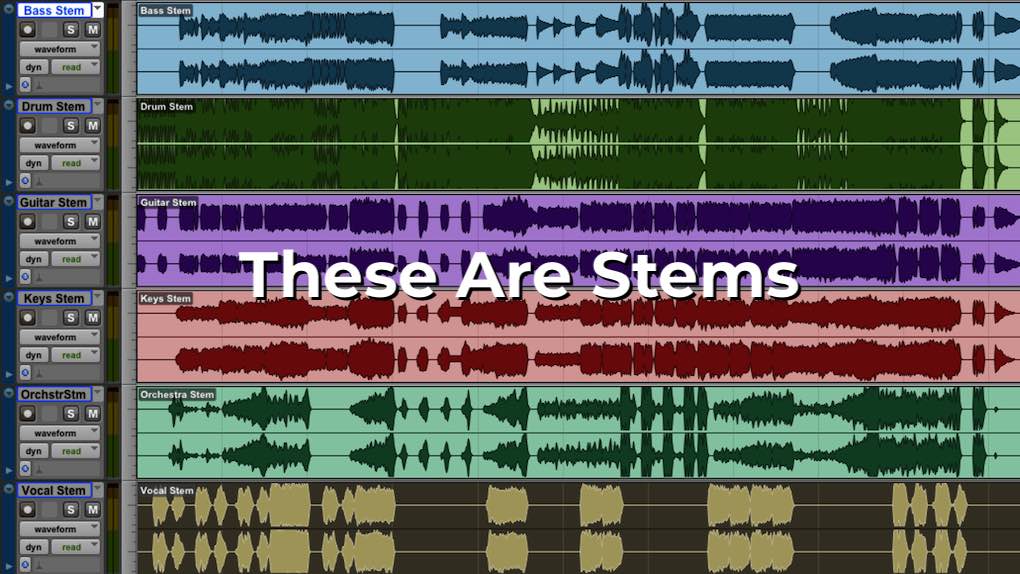- in Engineering by Bobby Owsinski
Yes, There Is A Difference Between Stems And Tracks

This is happening a lot lately. In a conversation, email, post or comment, someone say, “I received the stems for . . .” or “So I sent the stems to. . .”. If you’ve been around the studio for a while you’re surprised that the person didn’t actually mean “stems” at all, but “tracks.”
So What’s The Difference?
Stems and tracks are not the same thing, although some think they are and therefore the terms are interchangeable. Let me explain why that’s not the case.
TRACKS
These are the individual sound elements of your session in the DAW or on a tape machine that make up the mix, like bass, kick, a loop, vocals, etc. They can be in stereo, but most of them are probably going to be mono.
STEMS
Stems are stereo subgroup mixes of groups of similar types of tracks, usually complete with all processing and effects. These might include:
- Drums
- Vocals
- Bass
- Background Vocals
- Guitars
- Keyboards
- Horns, etc.
Sometimes record labels ask for what’s known as a “stems mix.”
This is a set of stereo submix files that in its simplest form can consist of a stereo bed and individual stereo tracks of the most important elements complete with effects. Sometimes this might just boil down to the instrumental track with a separate stems track for the lead and background vocals – it all depends on what you’re asked for, or what you think might be useful later so you don’t have to do the entire mix again.
Where They’re Really Useful
Using stems allows for an easy remix later if it’s decided that the balance of the lead vocal or the solo is wrong. In extreme cases, some mixers have resorted to the use of stems to keep everyone (mostly the record company) happy.
Stems are widely used in film mixing because a music mixer usually can’t tell what may be too loud or what music mix element could mask the dialog or sound-effects elements of the movie. The stems mix gives the dubbing mixer more control during the final mix, if required. It’s typical for the dubbing stage to ask for a stereo (or even surround) rhythm submix, a submix of any lead instruments or voices with effects, the bass by itself, and any instruments with a lot of high frequencies, all isolated on their own submix.
I promise that if you mix these terms up, it will come back to bite you somewhere down the line when someone is expecting one thing and you deliver another. Do yourself a favor – learn the difference and start using the correct term right now.
You can read more from the 5th edition of The Mixing Engineer’s Handbook and my other books on the excerpt section of bobbyowsinski.com.
